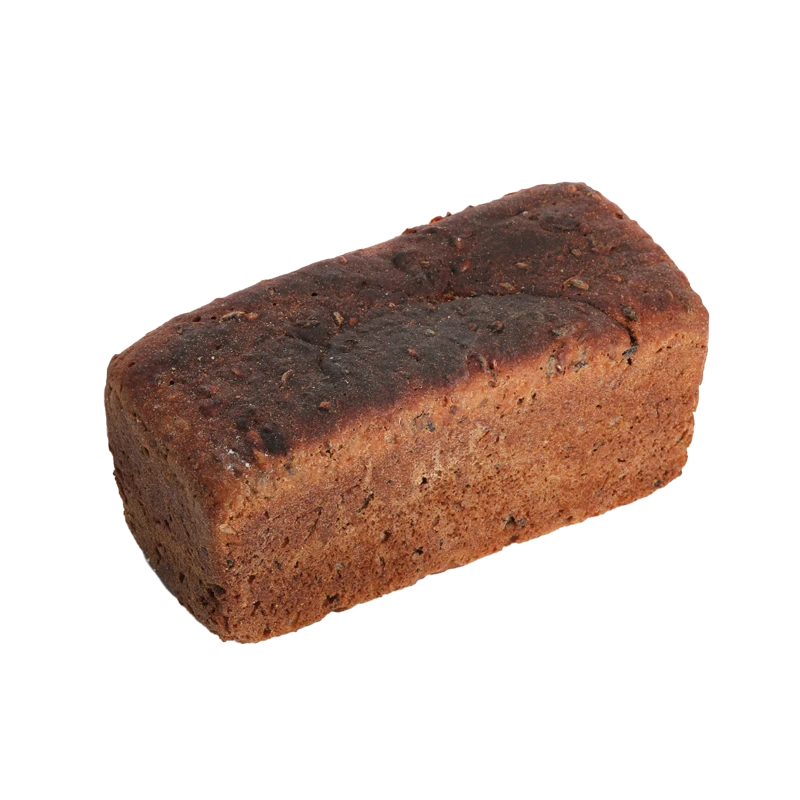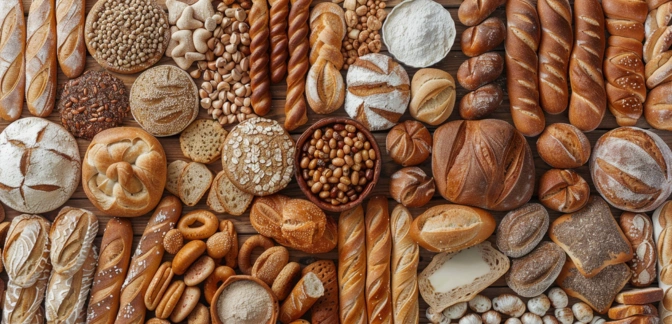Brown Bread — Nutrients, Health Benefits, And Shopping Tips

Written by Listonic Team
Last update on September 4, 2024
Nutrients
Nutrition facts
Amount per 100 g
Calories
🔥 246 kcal
| Nutrition per: 100 g | Value | % Daily Value* |
|---|---|---|
| Carbs | 42 g | 15.27% |
| Fiber | 7 g | 25% |
| Sugars | 4 g | 8% |
| Glycemic Index | 65 | - |
| Protein | 9 g | 18% |
| Sodium | 488 mg | 21.22% |
| Total Fat | 3 g | 3.85% |
*The % of Daily Value (DV) tells you how much a nutrient in a serving of food contributes to a daily diet. 2,000 calories a day is used for general nutrition advice.
7 g
🥔 Good Fiber Content
3 g
🥕 Low Fat Content
Key takeaways
Health benefits
- Rich in fiber, which supports digestive health, promotes regular bowel movements, and helps maintain a healthy gut microbiome.
- Provides sustained energy from its complex carbohydrates, making it a nutritious option for maintaining energy levels throughout the day.
- Contains essential vitamins and minerals such as B vitamins, iron, and magnesium, which support overall health and well-being.
- Supports heart health by helping to lower cholesterol levels and reduce the risk of heart disease.
Health risks
- Potential for hidden additives as some brown bread may contain added sugars, preservatives, or artificial coloring to enhance flavor or appearance.
- Gluten content which makes it unsuitable for individuals with celiac disease or gluten sensitivity, potentially causing digestive discomfort and other health issues.
- High sodium content in certain commercial varieties, which can contribute to hypertension and increased cardiovascular risks.
- Potential overconsumption due to its reputation as a healthier option, which can still lead to excessive caloric intake if portion sizes are not controlled.
How to choose brown bread
Brown bread should feature a crusty exterior and a dense, moist interior, made from whole grains with a rich, nutty aroma. Ensure that whole wheat or whole grains are listed as the primary ingredients.
Avoid brown bread that is overly dry or crumbly, indicating staleness or poor quality. Also, steer clear of breads with excessive preservatives or added sugars, which detract from their health benefits.

How to store brown bread
Brown bread should be stored at room temperature in a bread box or a paper bag to maintain its crust. If you prefer a softer crust, using a plastic bag is suitable. Brown bread can last up to a week when stored properly.
Refrigeration can make brown bread stale more quickly, so it’s best to avoid this. Humidity can cause mold growth, so storing bread in a dry place is essential. Freezing slices in airtight bags is effective for longer storage.
✅ Extra Tip
How long does it last?
Brown bread can last for 3-5 days at room temperature when stored in an airtight container or plastic bag. For longer storage, brown bread can be frozen for up to 3 months. Ensure it is tightly wrapped to prevent freezer burn.
What to do with leftovers?
Leftover brown bread can be used in a variety of recipes. Turn it into breadcrumbs for breading meats or topping casseroles, or slice and toast it for homemade croutons to add to salads or soups.
Use brown bread to make a bread pudding by soaking it in a custard mixture and baking until golden. It can also be used for French toast or in a savory bread pudding with cheese and vegetables. If you have a lot of brown bread, consider making bruschetta by toasting slices and topping them with tomatoes, garlic, and basil. Brown bread can also be used in sandwiches with your favorite fillings or frozen for later use.
👨⚕️️ Medical disclaimer
Discover products from other categories
Listonic Team
Fact-checked
Our editorial team checked this article to make sure it was accurate at the time of publishing it.
Get the top-rated shopping list app

brown bread
1 piece







